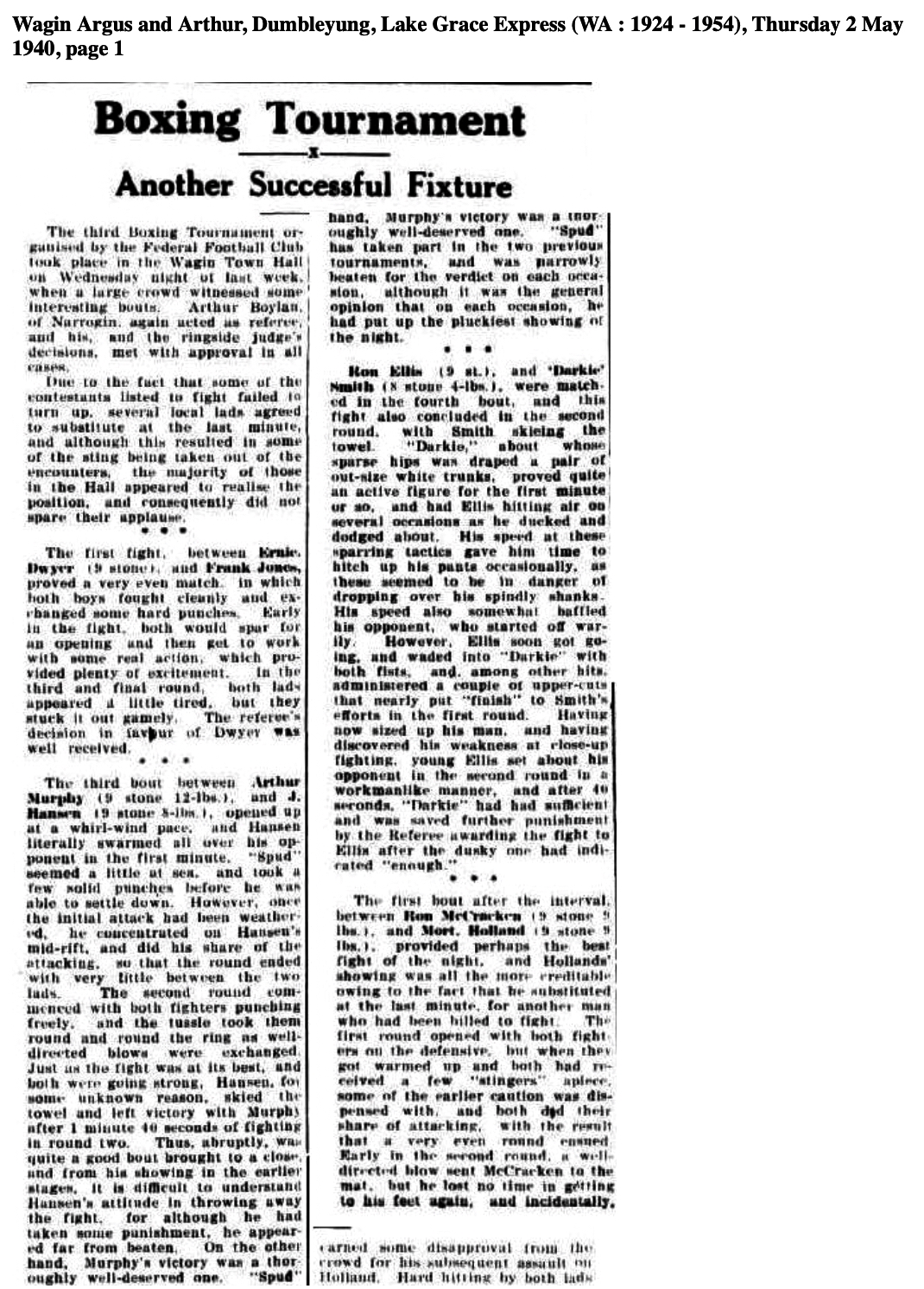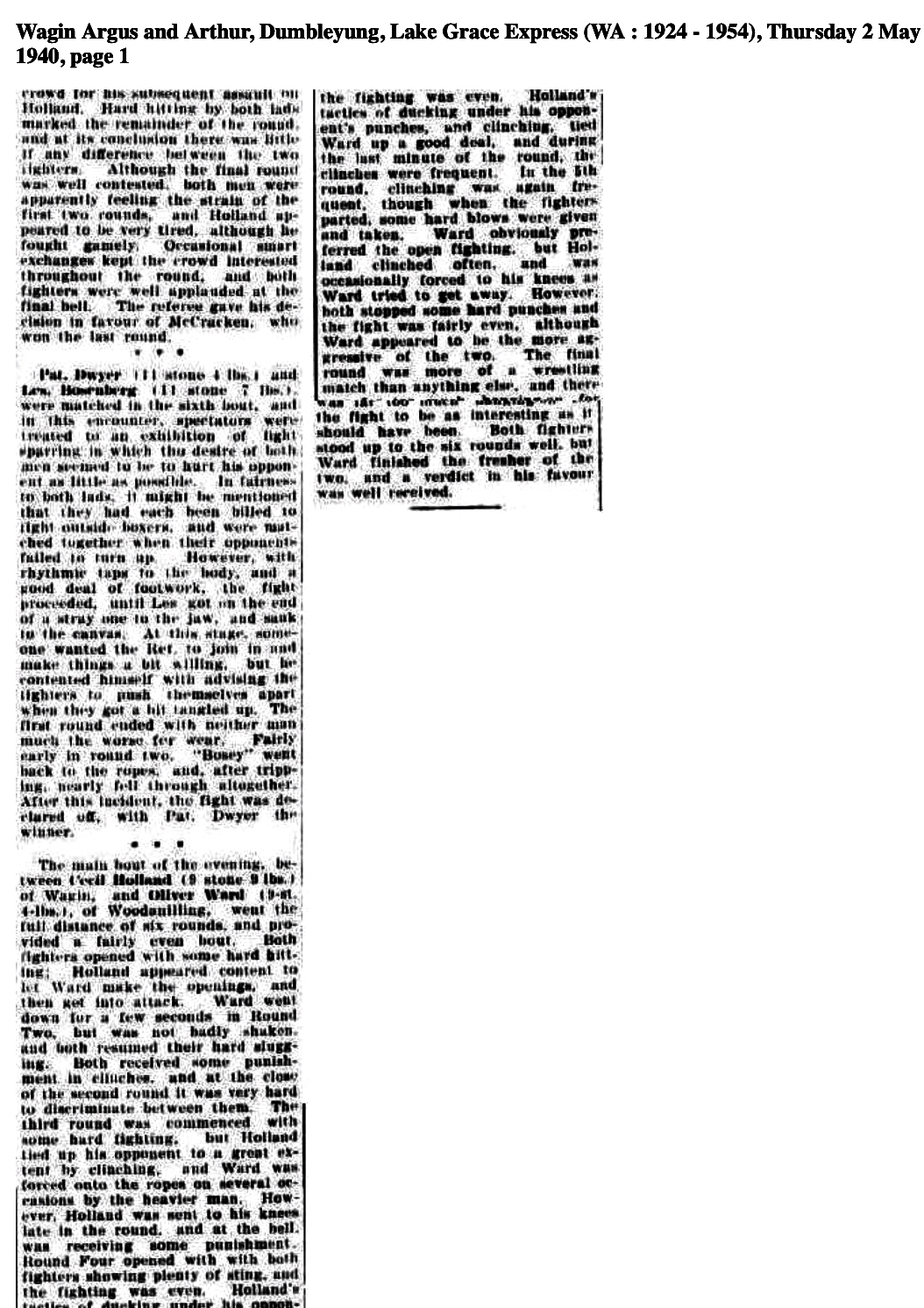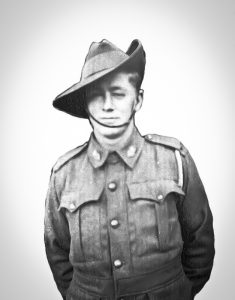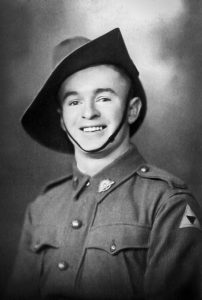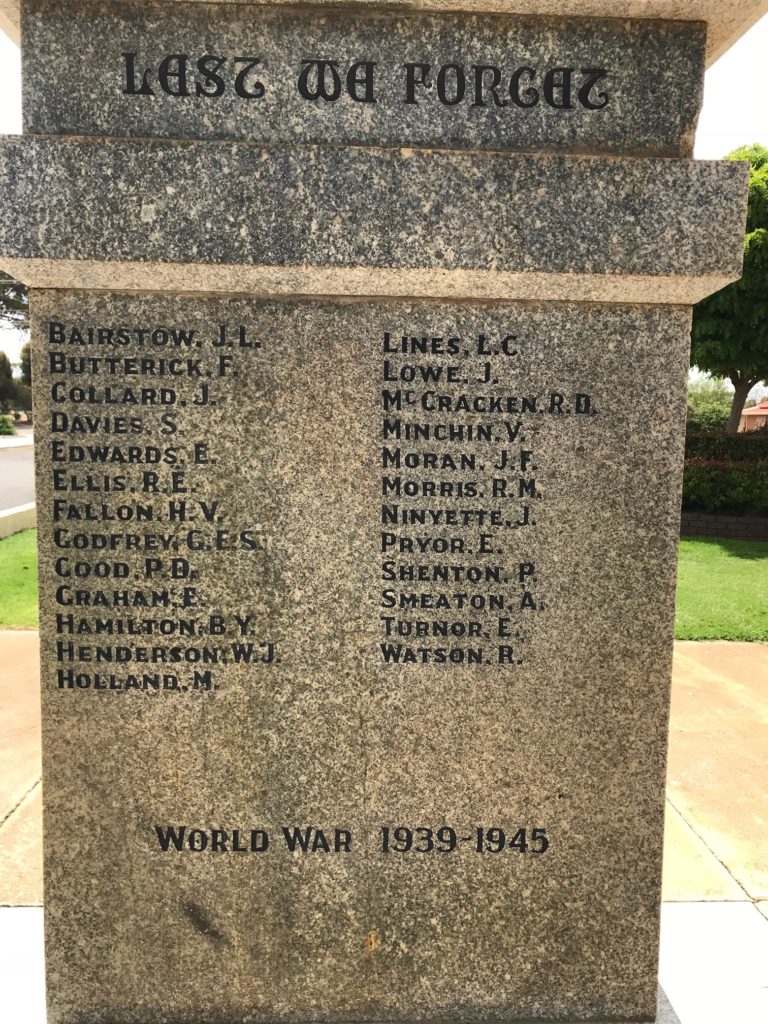
The Wagin WW2 Memorial includes two men from 2/4th who died:
WX17039 ELLIS, RONALD EDWARD at the age of 21 years died of wounds received on 11 February 1942 during the battle for Singapore.
The previous day, he received a gunshot wounds to his right arm and shrapnel wound to his chest. Ron Ellis was admitted to 2/13th Australian General Hospital suffering severe shock. He underwent amputation of his arm 2″ below the shoulder joint but succumbed to his injuries.
Ron Ellis was the eldest of 6 children born to George Christie Ellis and Olive Ellen King of Wagin. George and Olive married 1917 Katanning. They had six sons and two daughters.
Ron enlisted 17th May 1941 with 2/4th . He joined ‘D’ Company trained at Woodside SA and went to Darwin prior to sailing to Singapore on ‘Aquitania’ Jan 1942.
He was buried at Marita Road Military Cemetery, Katong and after the war, his body was interred and moved to Kranji War Memorial.
If you wish to read further about Ron Ellis, please go to
WX5584 MCCRACKEN, RONALD DUNCAN was born in Narrogin 11 December 1920. Ron enlisted 11 December 1940, and joined Headquarters Company as a Signaller. He was involved in the bayonet charge at Hill 200, Ulu Pandan and wounded in action, receiving a gunshot injury to his right foot. Singapore fell to Japan and whilst in hospital Ron became a POW. He was discharged to his unit and to Selarang Barracks 28 February 1942
From Selarang Camp Changi Ron was selected to work on the Burma-Thai Railway with ‘A’ Force Green Force No. 3 Battalion. Please read further
Ron was one of the few lucky POWs who did not get ill whilst working on the railroad – that is not to say he did not suffer starvation, long working hours and ill-treatment at the hands of his Japanese or Korean guards. It simply mens he was not recorded being a patient at a so-called camp ‘hospital’ (which were always without medicines or medical equipment). When the railway was completed the Japanese transported those working at the Burma end south to one of the large camps in Thailand – many died on their journey due to ill-health, those too weak to be moved from Burma remained behind to die in peace nursed by dedicated voluntary POW medical staff.
A few months later Ron was rated ‘fit’ by the Japanese and selected to work in Japan in what would become known as ‘Rakuyo Maru’ Party. Between December 1943 and March 1944 the men having been innoculated twice against cholera, twice against pestis (plague) and once against tuberculosis departed their camps at either Tamarkan, Banpong or Non Pladuk by train in groups heading to Bangkok with their final destination Saigon, French Indo-China where it was planned the POWs would be shipped to Japan.
In Saigon the POWs worked on the docks, go-downs and other jobs at Tan Son Nhut civil aerodrome north of Saigon while waiting for a ship. Several attempts were made to leave Saigon, but the POWs returned. Any Japanese plans for their ships to depart Saigon were finally realised to be futile. They suffered huge losses of shipping to the Allies. American submarines patrolling the South China Sea had now successfully blockaded the harbour and port. The POWs were to be returned by rail to Bangkok and finally Singapore to wait for a ship. On 4th July the train carrying the ‘Rakuyo Maru’ party as they were now called, arrived at Singapore and moved into River Valley Road Transit Camp. Until their departure on 4 September 1944, the POWs worked at various places, including the docks and excavation of the dry dock opposite Pulau Damar Laut, known as Jeep Island from 7 July to 3 September.
Finally the ill-fated ‘Rakuyo Maru’ crammed with 718 POWs in its hull moved out of Singapore harbour to the roadstead and anchored for 36 hours to wait for its convoy. On 6 September the small convoy headed north east into to South China Sea.
On Tuesday 12 September 1944 at 0530 hours the convoy was attacked by three US submarines.
Although a few very fortunate POWs were found by the same submarines which attacked their ship, Ron did not survive, he was one of a very large number who perished.
WX8540 GREEN, Thomas William known as ‘Tommy’ was born 1918 Wagin to George Henry and Janet Margaret Green who married Port Adelaide, SA in 1902. Tommy enlisted AIF Oct 1940, later joining Headquarters Coy No. 3 Platoon as a Driver. He married in 1940 to Sylvia Madaleine King.

He was AWOL when ‘Aquitania’ sailed for Singapore from Fremantle 16 Feb 1942 and was taken to Java with about 90 other 2/4th machine gunners who had been left behind. Please read the story of how Green arrived in Java and not Singapore
From Java Green was sent on a work party to Burma-Thai Railway via Singapore with ‘A’ Force Burma Java Party not 4 Black Force EXCEPT that Green became ill in Singapore and was left behind. Tommy had the misfortune to be then taken with ‘E’ Force North Borneo to Sandakan. He died at Sandakan 22 Jan 1945 aged 24. There were no survivors at Sandakan except 6 men who were lucky to escape.
Two men who joined 2/4th born in Wagin were Jim Clancy and Dutchy Holland. Both men were selected to leave Singapore 16 Aug 1942 with Japan ‘B’ Party to Keijo.
Below: Clancy and Hubert Holland.
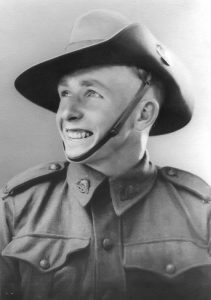
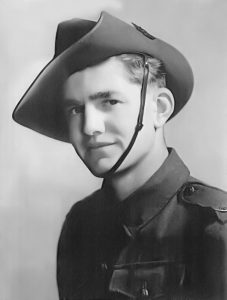
Another 2/4th to have connections with Wagin is Brooker.
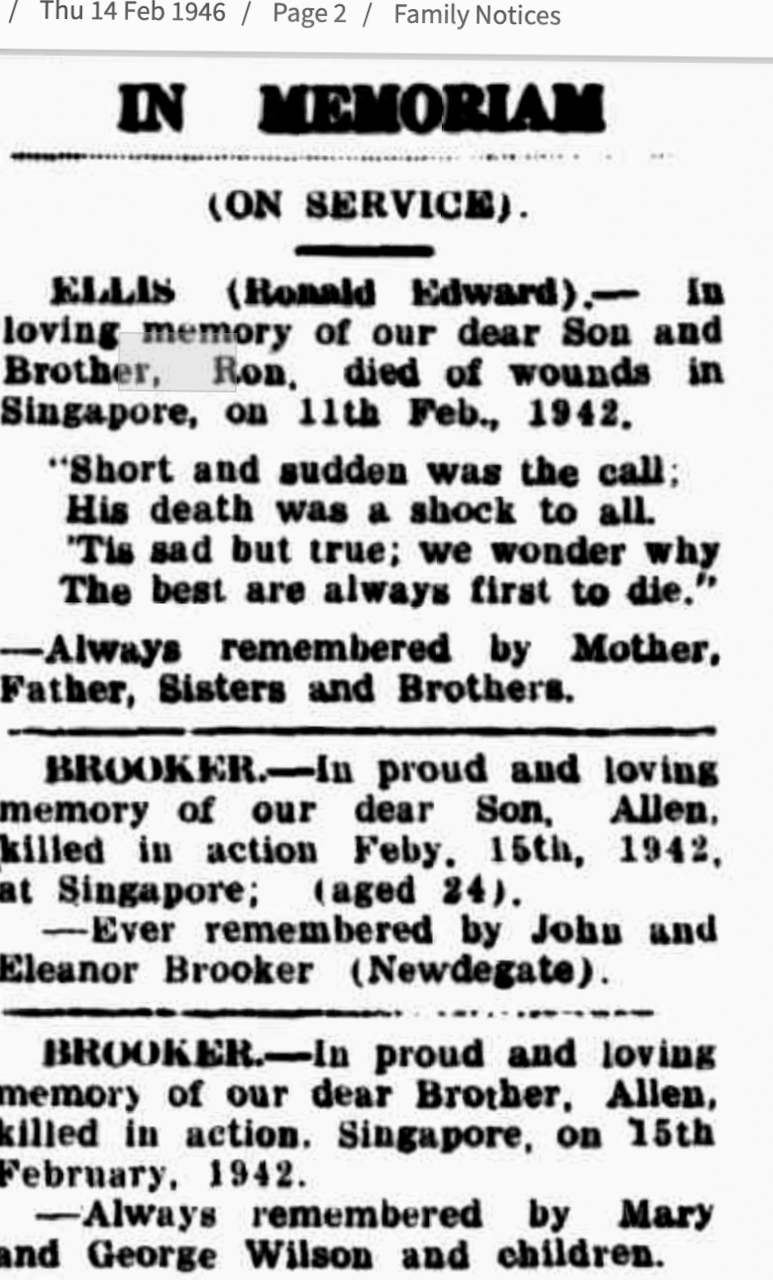
Below: Boxing match in Wagin – participants include, McCracken, Ellis.
